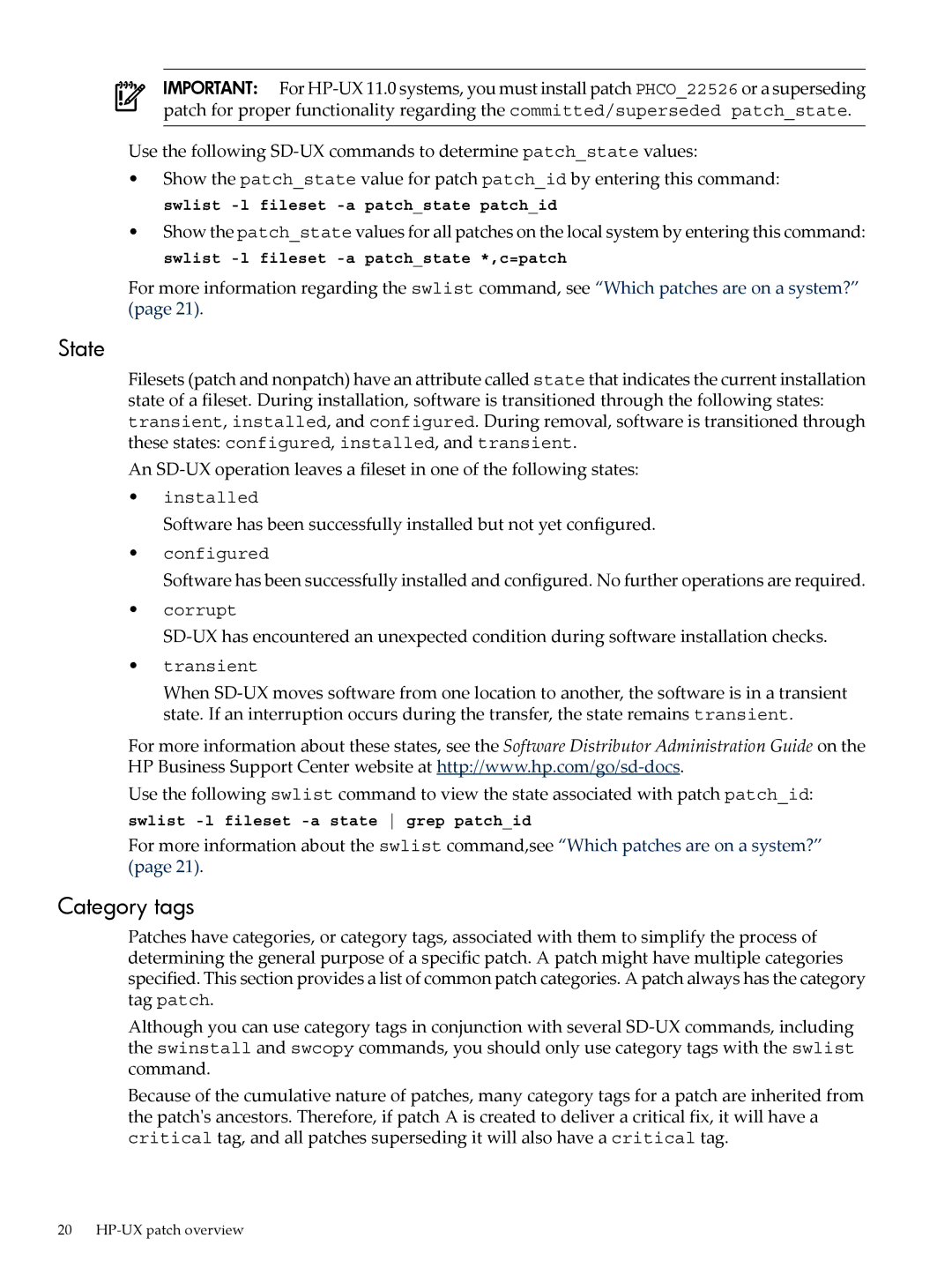IMPORTANT: For
Use the following
•Show the patch_state value for patch patch_id by entering this command: swlist
•Show the patch_state values for all patches on the local system by entering this command: swlist
For more information regarding the swlist command, see “Which patches are on a system?” (page 21).
State
Filesets (patch and nonpatch) have an attribute called state that indicates the current installation state of a fileset. During installation, software is transitioned through the following states: transient, installed, and configured. During removal, software is transitioned through these states: configured, installed, and transient.
An
•installed
Software has been successfully installed but not yet configured.
•configured
Software has been successfully installed and configured. No further operations are required.
•corrupt
•transient
When
For more information about these states, see the Software Distributor Administration Guide on the HP Business Support Center website at
Use the following swlist command to view the state associated with patch patch_id:
swlist -l fileset -a state grep patch_id
For more information about the swlist command,see “Which patches are on a system?” (page 21).
Category tags
Patches have categories, or category tags, associated with them to simplify the process of determining the general purpose of a specific patch. A patch might have multiple categories specified. This section provides a list of common patch categories. A patch always has the category tag patch.
Although you can use category tags in conjunction with several
Because of the cumulative nature of patches, many category tags for a patch are inherited from the patch's ancestors. Therefore, if patch A is created to deliver a critical fix, it will have a critical tag, and all patches superseding it will also have a critical tag.
20
